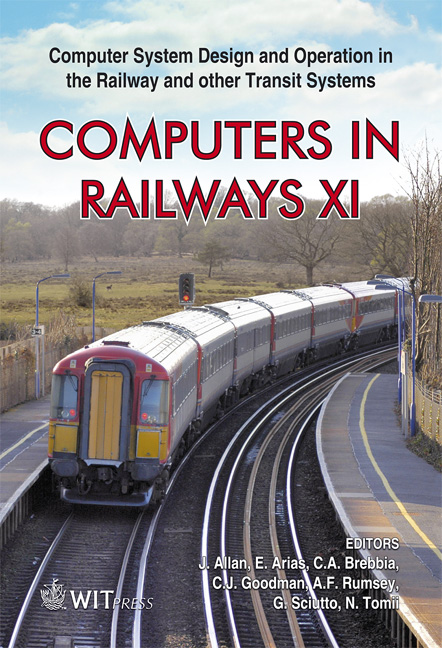Applying Multiscaling Analysis To Detect Capacity Resources In Railway Networks
Price
Free (open access)
Transaction
Volume
103
Pages
10
Page Range
595 - 603
Published
2008
Size
1,119 kb
Paper DOI
10.2495/CR080581
Copyright
WIT Press
Author(s)
A. Gille, M. Klemenz & Th. Siefer
Abstract
A substantial part of railway engineering is modeling of the real track infrastructure and train operation processes in computer applications. The electronic data created can be analysed and evaluated for research purposes. Depending on the aim of the research, three different models can be used which differ in their level of itemisation. Macroscopic models have a relative low level of accuracy, mesoscopic a medium and microscopic models have the highest. The Institute of Transport, Railway Construction and Operation (IVE, Hannover) researches computing solutions to deliver the data in the requested level of detail. This is then used for generating and providing infrastructure and train operation data such as timetable data, running times of trains or block occupancy times. The Multiscaling Analysis offers the opportunity to use the appropriate model depth (level of detail) for each request and enables work to progress efficiently. For tasks like long term capacity planning in railway networks no high detail level data is required normally, so macroscopic models can be initiated. To verify if train paths of a timetable, developed on a macroscopic or mesoscopic railway infrastructure, can actually be arranged without conflicts within the block occupancy times or the headway, a more detailed microscopic model is required. Therefore trains with only a low detail level of information like their route, stopping locations and stopping times can be mapped onto a microscopic infrastructure model to prove the feasibility and to determine capacity resources. Keywords: infrastructure, capacity resources, networks, microscopic model, mesoscopic model, macroscopic model, RailSys, NEMO.
Keywords
infrastructure, capacity resources, networks, microscopic model, mesoscopic model, macroscopic model, RailSys, NEMO.





